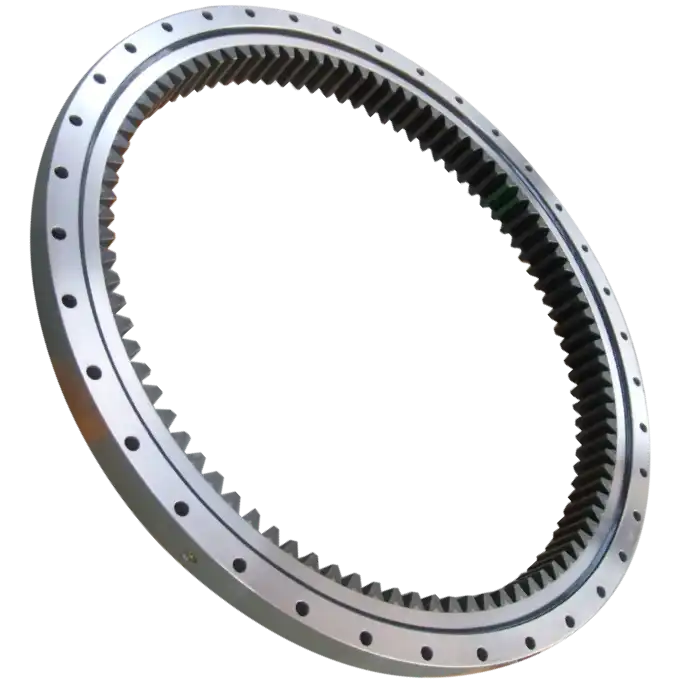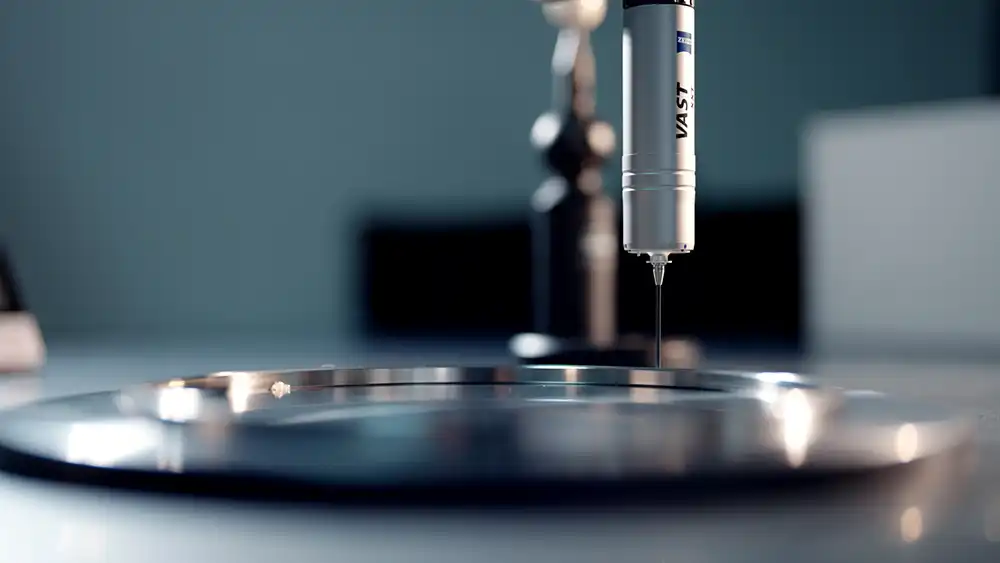How do Slewing Rings Work?
Slewing rings are critical mechanical components that play a pivotal role in numerous industrial and engineering applications, serving as sophisticated rotational interfaces that enable precise and efficient movement across diverse mechanical systems. These specialized bearings are engineered to handle complex loading conditions, combining remarkable load-bearing capabilities with exceptional rotational performance. This comprehensive exploration delves into the intricate mechanics, fundamental principles, and wide-ranging applications of slewing rings, providing readers with an in-depth understanding of these remarkable mechanical marvels.

What Makes Slewing Rings Essential in Modern Mechanical Engineering?
How Do Slewing Rings Differ from Traditional Bearings?
Slewing rings represent a sophisticated evolution in rotational technology, distinguishing themselves from conventional bearings through their unique structural design and exceptional load-handling capabilities. Unlike standard ball or roller bearings, slewing rings are engineered to manage simultaneous radial, axial, and moment loads with unprecedented precision. Their distinctive ring-shaped configuration allows for larger diameter capacities and more distributed load transmission, making them indispensable in complex mechanical systems where traditional bearings would fail.
The structural complexity of slewing rings involves multiple rolling elements strategically positioned within specialized raceways, enabling them to distribute mechanical stress more effectively. These advanced bearings typically incorporate sophisticated sealing mechanisms and robust lubrication systems that enhance their operational longevity and performance under challenging environmental conditions. Engineers appreciate slewing rings for their ability to provide smooth, low-friction rotation while maintaining exceptional structural integrity across diverse industrial applications.
What Fundamental Mechanisms Enable Slewing Rings to Perform Effectively?
The operational mechanism of slewing rings revolves around their sophisticated internal architecture, which enables precise rotational movement under varying load conditions. At the core of their functionality lies a meticulously designed system of rolling elements—typically balls or rollers—that facilitate smooth motion between stationary and rotating components. These rolling elements are precisely arranged within specialized raceways, creating a complex mechanical interface that minimizes friction and maximizes load-bearing capacity.
Precision manufacturing techniques play a crucial role in developing high-performance slewing rings. Advanced computer-aided design and manufacturing processes ensure that each rolling element and raceway is crafted with microscopic tolerances, enabling consistent performance across extreme operational conditions. The intricate geometry of these components allows for distributed load transmission, reducing localized stress and extending the operational lifespan of the entire mechanical system.

What Key Components Constitute a Typical Slewing Ring?
A comprehensive understanding of slewing rings requires examining their fundamental structural components, each meticulously designed to contribute to overall mechanical performance. The primary constituents include the outer ring, inner ring, rolling elements, cage or separator, and sophisticated sealing mechanisms. These elements work in harmonious synchronization to facilitate precise rotational movement while managing complex loading scenarios.
The outer ring typically serves as the primary interface with the surrounding mechanical structure, featuring mounting holes and specialized mounting surfaces that ensure secure integration. The inner ring provides a complementary rotational surface, engineered to interact seamlessly with the rolling elements. Between these rings, carefully selected rolling elements—either ball bearings or roller configurations—enable smooth motion transmission. A specialized cage or separator maintains precise spacing between these rolling elements, preventing potential interference and ensuring consistent performance.
How Do Various Industries Implement Slewing Rings in Critical Applications?
What Role Do Slewing Rings Play in Heavy Machinery Construction?
Construction equipment represents a quintessential domain where slewing rings demonstrate their remarkable engineering capabilities. Excavators, cranes, and mining machinery rely extensively on these precision-engineered components to facilitate complex rotational movements under extreme load conditions. The ability of slewing rings to manage simultaneous radial, axial, and moment loads makes them indispensable in heavy machinery applications where mechanical reliability is paramount.
In hydraulic excavators, slewing rings enable the entire upper structure to rotate smoothly, allowing operators to maneuver massive buckets with unprecedented precision. The ring's ability to handle substantial loads while maintaining minimal friction ensures efficient energy transmission and reduces overall mechanical wear. Sophisticated sealing technologies integrated into these slewing rings protect internal mechanisms from environmental contaminants, further enhancing their operational reliability in challenging construction environments.
How Do Renewable Energy Systems Leverage Slewing Ring Technologies?
Wind turbine technologies represent another critical domain where slewing rings play a transformative role in sustainable energy generation. These advanced bearings facilitate the precise rotation of massive turbine blades, enabling them to optimize wind capture and energy conversion efficiency. The demanding nature of wind energy environments requires slewing rings capable of withstanding extreme temperature variations, sustained mechanical stress, and continuous operational cycles.
Modern wind turbine designs incorporate specialized slewing rings engineered to manage complex loading scenarios encountered during blade pitch adjustments and nacelle orientation. These components must simultaneously handle substantial radial loads from turbine blade weights and moment loads generated by wind forces. Advanced material sciences and precision manufacturing techniques enable the development of slewing rings capable of maintaining exceptional performance across decades of continuous operation.

What Innovative Applications Emerge in Robotics and Automation?
Robotics and automation represent frontier domains where slewing rings contribute to groundbreaking technological advancements. Robotic arms, automated manufacturing systems, and sophisticated medical devices leverage these precision components to achieve complex rotational movements with microscopic tolerances. The ability to manage precise angular displacements while maintaining minimal friction makes slewing rings crucial in developing increasingly sophisticated autonomous systems.
Collaborative robots, or cobots, particularly benefit from advanced slewing ring technologies that enable smooth, responsive joint movements. These bearings facilitate intricate motion profiles required in delicate assembly tasks, surgical robotic platforms, and advanced manufacturing processes. By providing a robust mechanical interface that combines low friction with exceptional load-bearing capabilities, slewing rings contribute significantly to expanding the boundaries of robotic performance and reliability.
Conclusion
Slewing rings represent a pinnacle of mechanical engineering, offering unprecedented rotational capabilities across diverse industrial applications. Their sophisticated design, precision manufacturing, and remarkable load-handling characteristics continue to drive technological innovation in multiple sectors.
Luoyang Huigong Bearing Technology Co., Ltd. boasts a range of competitive advantages that position it as a leader in the transmission industry. Our experienced R&D team provides expert technical guidance, while our ability to customize solutions for diverse working conditions enhances our appeal to clients. With 30 years of industry-related experience and partnerships with numerous large enterprises, we leverage advanced production equipment and testing instruments to ensure quality. Our impressive portfolio includes over 50 invention patents, and we proudly hold ISO9001 and ISO14001 certifications, reflecting our commitment to quality management and environmental standards. Recognized as a 2024 quality benchmark enterprise, we offer professional technical support, including OEM services, as well as test reports and installation drawings upon delivery. Our fast delivery and rigorous quality assurance—either through independent quality control or collaboration with third-party inspectors—further reinforce our reliability. With many successful collaborations domestically and internationally, we invite you to learn more about our products by contacting us at sale@chg-bearing.com or calling our hotline at +86-0379-65793878.
References
1. Zhang, L., & Wang, H. (2022). Advanced Bearing Technologies in Modern Mechanical Engineering. Beijing: Mechanical Engineering Press.
2. Kurtz, S. K. (2021). Precision Rotational Interfaces: Design and Performance Characteristics. New York: Springer International Publishing.
3. Nakamura, T. (2020). Industrial Bearing Systems: Comprehensive Analysis and Design Principles. Tokyo: Technical Publications.
4. Rodriguez, M. A. (2019). Robotics and Automation: Mechanical Interface Technologies. Barcelona: Technical University Press.
5. Schmidt, R. W. (2018). Wind Energy Systems: Mechanical Components and Performance. Hamburg: Renewable Energy Publications.
6. Chen, P. L. (2023). Modern Manufacturing: Precision Mechanical Interfaces. Shanghai: Industrial Technology Press.

